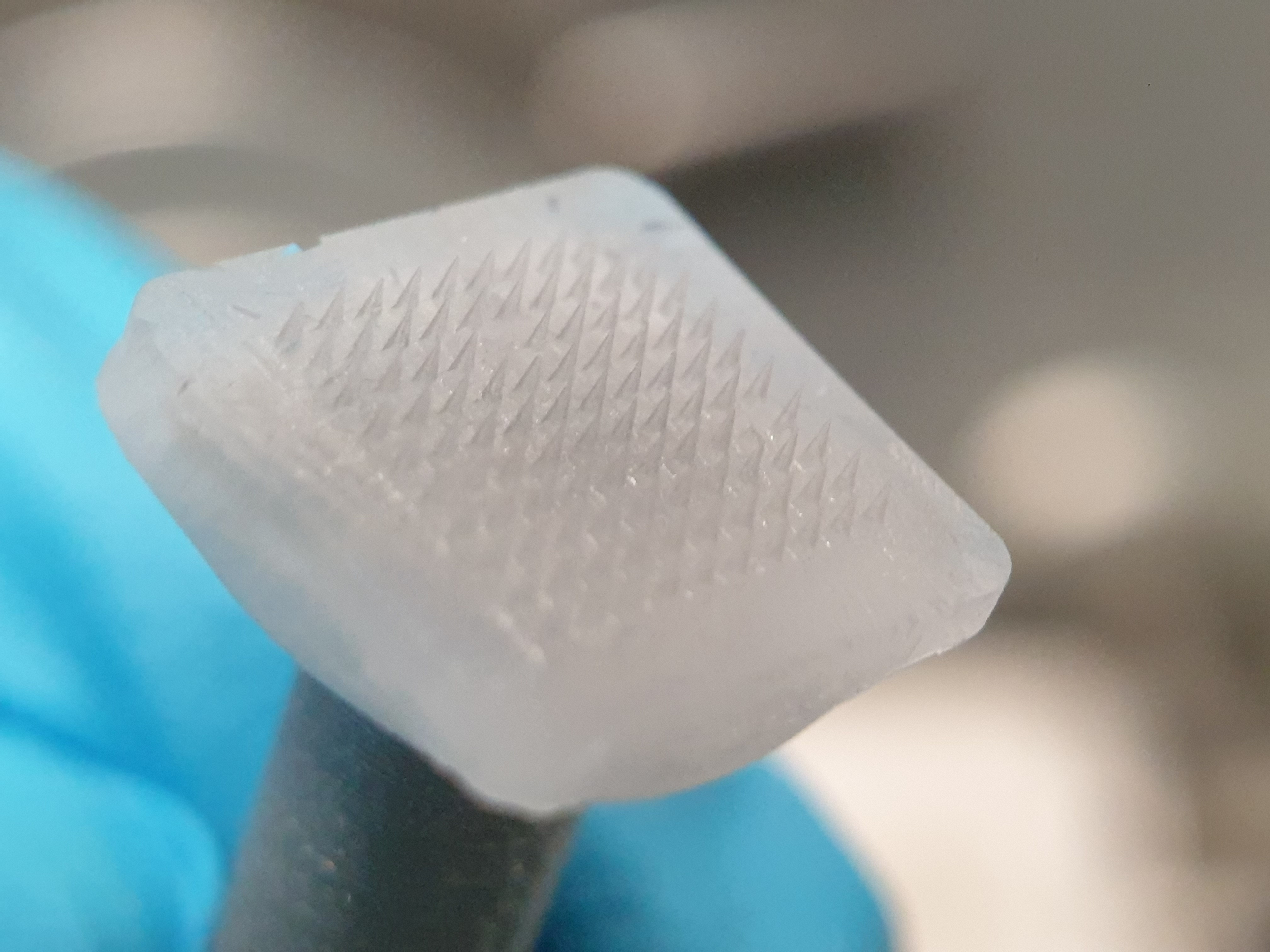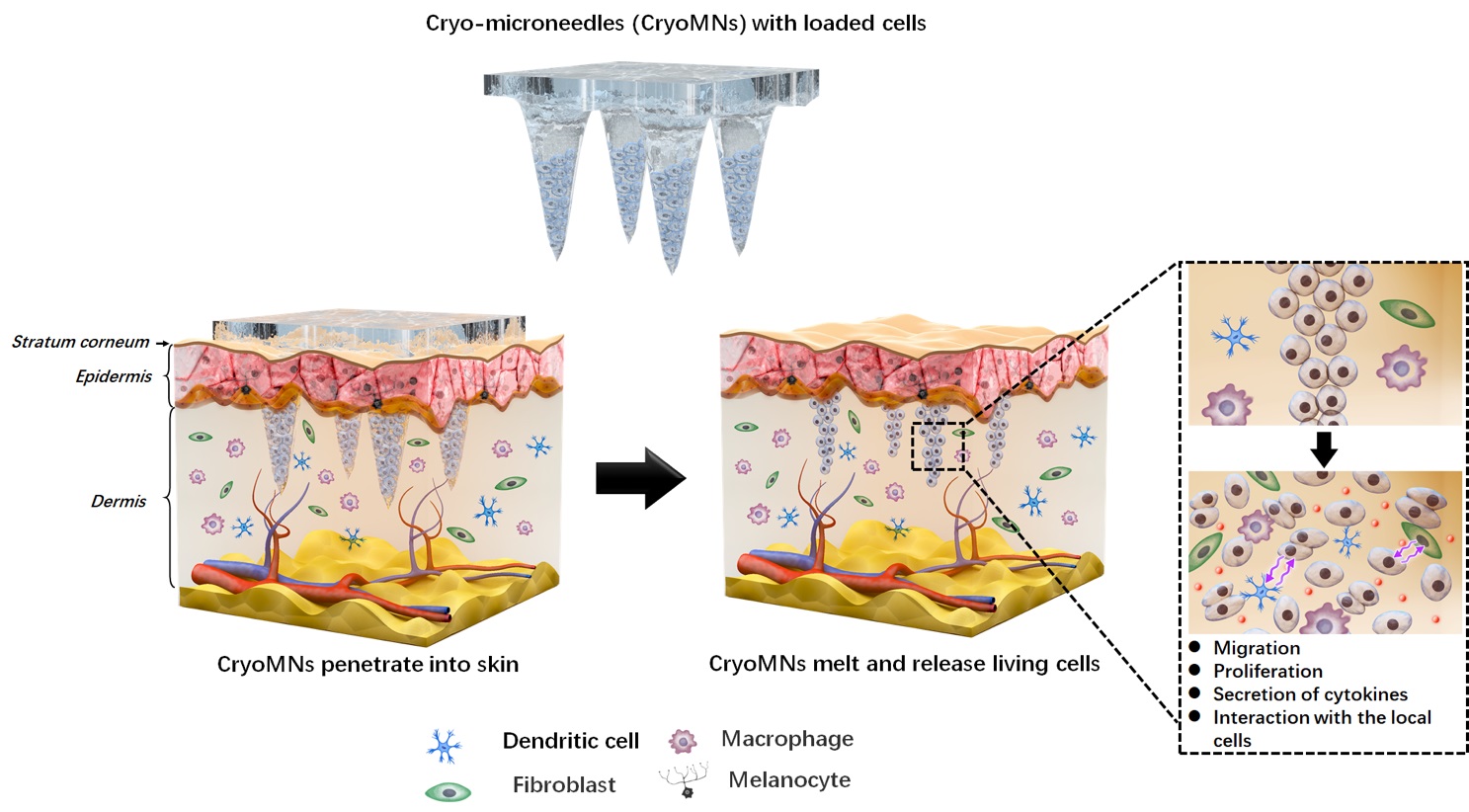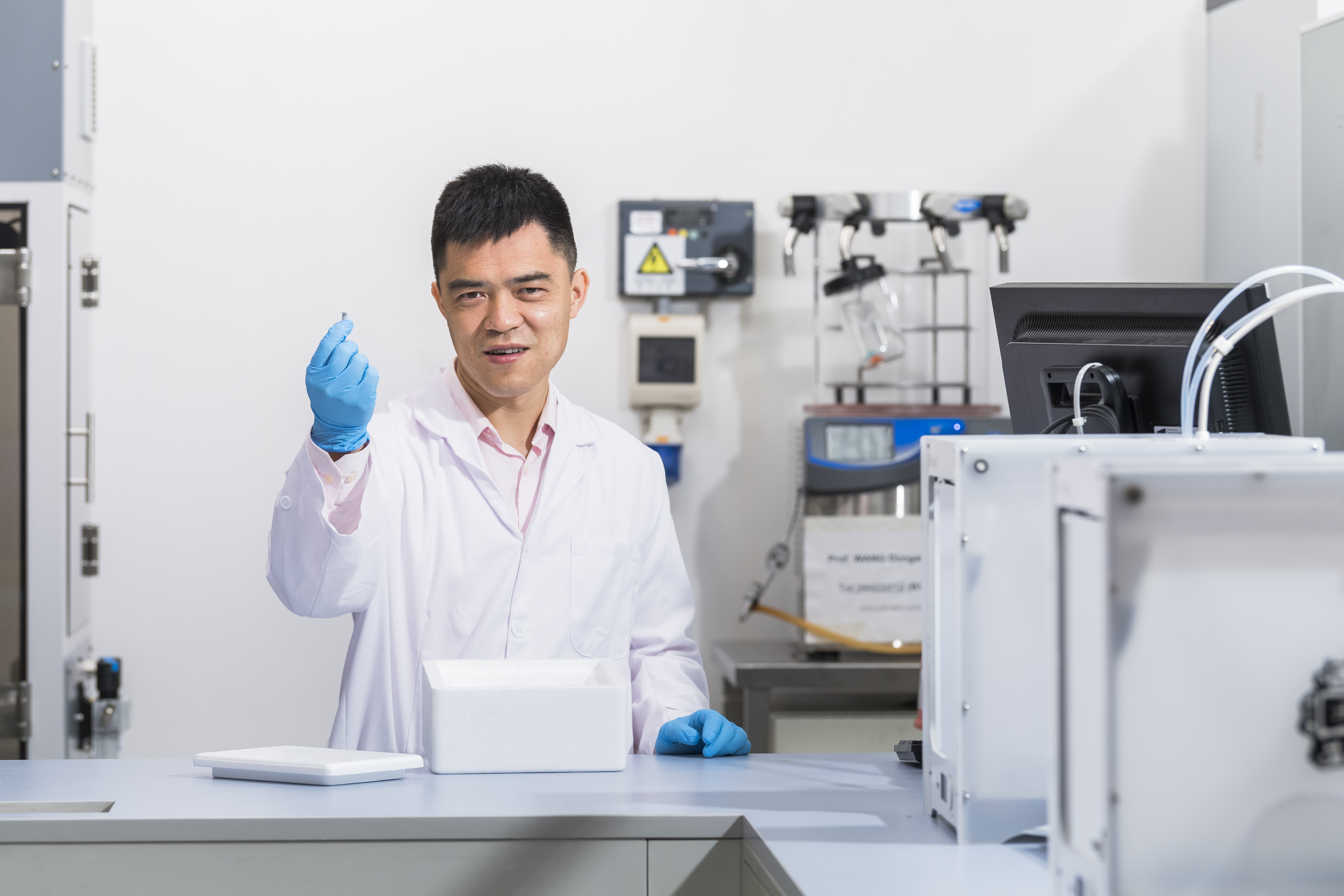CityU scientists invent cryomicroneedles for intradermal therapeutic cell delivery
A research team led by City University of Hong Kong (CityU) scientists recently developed a new generation of microneedles technology which allows the intradermal delivery of living cells in a minimally invasive manner. Their experiment showed that vaccination using therapeutic cells through this ground-breaking technology elicited robust immune responses against tumours in mice, paving the way for developing an easy-to-use cell therapy and other therapeutics against cancers and other diseases.
The study was led by Dr Xu Chenjie, Associate Professor at the Department of Biomedical Engineering (BME) at CityU. The latest findings have been published in the scientific journal Nature Biomedical Engineering, titled “Cryomicroneedles for Transdermal Cell Delivery”.

Cell therapy, also called cell transplantation, is a therapy in which living cells like immune cells or stem cells are injected, grafted or implanted into a patient to achieve a medicinal effect. Advances in cell therapies have brought promising treating approach for previously intractable diseases like cancers. The global market size of cell therapy was valued at USD 7.8 billion in 20201.
“But many problems related to the application of cell therapy yet to be solved,” said Dr Xu. For example, the therapeutic cells are currently delivered by either surgical grafts or bolus injection. These methods are invasive, painful, complicated, low-efficient, and they bring the risk of infection and require experienced professionals to implement. It is also hard to store and transport the current solution-like formulations of cell therapeutics.
To solve this challenge, Dr Xu and his team at CityU have developed the new technology of “cryomicroneedles”. Made of cryogenic solution, the icy microneedles shorter than 1mm can carry and deliver living cells into the skin. “It is a skin patch-like device that can load, store, and intradermally deliver the living therapeutic cells,” explained Dr Xu.

A cryomicroneedle patch placed on the hand to demonstrate the melting of the needles on the skin (without pressing them to penetrate into the skin) (Video source: DOI number: 10.1038/s41551-021-00720-1)
By putting the patch-like device on the skin, the microneedles would penetrate through the skin, detach from the patch base and then melt. The loaded cells were released, and subsequently migrated and proliferated inside the skin. This innovative device can be stored for months in refrigerators. It is also easy for transportation and deployment.
As a proof-of-concept, the researchers explored cell-based cancer immunotherapy through intradermal delivery of ovalbumin-pulsed dendritic cells. In the study, vaccination with this device elicited robust antigen-specific immune responses and provided strong protection against tumour in mice, which were superior to the therapeutic outcomes by conventional standard vaccination methods such as subcutaneous and intravenous injection.

“The application of our device is not limited to the delivery of cells. This device can also package, store, and deliver other types of bioactive therapeutic agents, such as proteins, peptides, mRNA, DNA, and vaccines. I hope this device offers an easy-to-use and effective alternative method for the delivery of therapeutics in clinics,” Dr Xu said.

Dr Chang Hao from CityU’s BME is the first author, and Dr Xu is the corresponding author. Professor Wang Dongan and Dr Shi Peng from BME are also part of the research team. Other researchers come from Nanyang Technological University and National University of Singapore. The research was partially funded by the CityU and a patent application has been filed through CityU.
DOI: 10.1038/s41551-021-00720-1
1 https://www.grandviewresearch.com/industry-analysis/cell-therapy-market